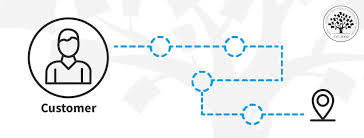At TEMS Tech Solutions (TTS), our Customer Journey Mapping service provides a comprehensive analysis of how customers interact with your brand across different touchpoints. By visualizing the customer journey from awareness to post-purchase, we help identify opportunities to enhance customer satisfaction, streamline processes, and drive engagement at every stage of the experience.
Key Benefits:
- Journey Visualization: Create detailed maps that illustrate every interaction a customer has with your brand, helping you understand their complete experience from discovery to loyalty.
- Touchpoint Analysis: Identify key customer touchpoints (website, mobile app, customer service, social media, etc.) and assess their effectiveness in delivering a seamless, positive experience.
- Pain Point Identification: Pinpoint friction points or barriers in the customer journey that may lead to drop-offs, dissatisfaction, or missed sales opportunities, providing actionable insights for improvement.
- Customer Behavior Insights: Analyze how customers behave and make decisions at different stages of the journey, allowing you to tailor your messaging, services, and support to meet their needs.
- Cross-Channel Experience Optimization: Ensure a consistent and cohesive experience across all channels (online and offline), enabling customers to seamlessly transition between platforms or services.
- Personalization Opportunities: Discover opportunities to personalize the customer journey based on data such as preferences, demographics, or previous interactions, increasing engagement and loyalty.
- Conversion Rate Enhancement: Optimize specific stages of the journey to improve conversion rates, whether through clearer messaging, simplified navigation, or more targeted offers.
- Customer Segmentation Analysis: Segment the journey based on different customer types (new vs. returning, high-value vs. low-value) to provide tailored experiences that cater to each group’s unique needs.
- Emotional Journey Mapping: Understand the emotional highs and lows that customers experience at different stages of their journey, helping you create more empathetic and supportive interactions.
- Churn Prevention: Identify where in the journey customers are most likely to drop off or disengage, allowing you to implement strategies to reduce churn and improve retention.
- Customer Feedback Integration: Incorporate real customer feedback into the journey mapping process, ensuring that the map reflects actual customer experiences and not just assumptions.
- Purchase Journey Optimization: Streamline the path to purchase by reducing friction in the checkout process, simplifying decision-making steps, and enhancing the overall shopping experience.
- Post-Purchase Engagement: Improve post-purchase experiences through follow-up communications, loyalty programs, or personalized recommendations, turning one-time buyers into loyal customers.
- Employee and Team Alignment: Use customer journey maps to align internal teams (marketing, sales, customer service, etc.) around a shared understanding of the customer experience, ensuring consistent service delivery.
- Proactive Customer Service: Identify key moments when customers are most likely to need support, allowing you to provide proactive assistance that enhances satisfaction and loyalty.
- Data-Driven Journey Improvements: Use customer data and analytics to continuously refine and optimize the journey, ensuring that it evolves with changing customer expectations and behaviors.
- Journey Impact on Revenue: Analyze how different stages of the customer journey impact revenue, helping you prioritize efforts that directly contribute to business growth.






Reviews
There are no reviews yet.